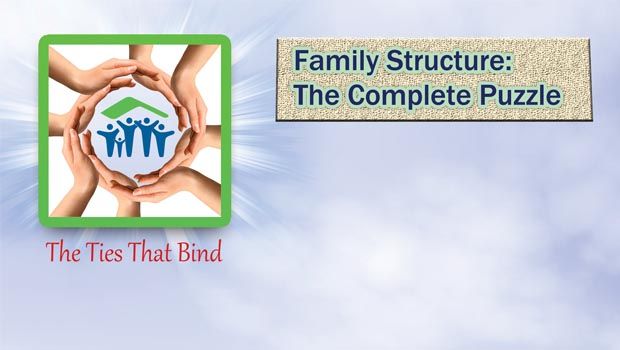I have seen it all too often—the woman who complains that her husband takes her daughter’s side;or a grandmother (either maternal or paternal) living in the home is spoiling the child. Yet another common occurrence is that the husband and wife practice entirely different discipline techniques (if at all!) with the children. These problematic circumstances are rampant in today’s families and, unfortunately, play a huge role in the instability of family members, particularly the children, in the long haul.
Why are these situations problematic? Aren’t they just normal parts of everyday family life? Although they may be a part of many families, these seemingly minor annoyances are causing a greater amount of damage than meets the eye.
Family Structure is Key
Since the family is the foundation of the building which is society, it must be firm and grounded for the rest of society to remain stable. If the family is crooked or shaky, the building will crumble. The situations mentioned above are indications of a possible faulty structure in the family. If the family is functioning well and everyone is getting along, perhaps there is no need for change. However, if there are issues within the family such as a child acting out, a couple arguing more often than usual, or emotional distress in a family member, then a possible explanation can be that the family structure requires attention.
What is a family structure? The structure of the family “consists of recurrent patterns of interaction that its members develop over time as they accommodate to each other” according to Jorge Colapinto, a Structural Family Therapist who studied with Salvador Minuchin, the founder of Structural Family Therapy. The relationships between the family members make up its structure. A well-defined structure will allow for positive relationships, appropriate hierarchy, and individual well-being. A faulty structure, however, may lead to the opposite.
An appropriate structure, in order to function properly, consists of a clear hierarchy (i.e. mother and father or single mother/single father) and a boundary between the authority figure(s) and others. An example is that a mother and father are the authority figures who work as a team, co-parenting their children according to the same principles and guidelines. Decision-making occurs between the two of them and the children are taught to respect those lines.
With clear boundaries between the children and adults in charge, children are given the tools to thrive. As Dr. Amy Starks, Clinical Psychologist, explains, “children need rules, structure, boundaries, and consistency to be healthy and well-adjusted adults.” Children actually look for boundaries, so when limits are set by the parents, it provides a safe haven for the child to be emotionally secure and inclined to grow in maturity. Too often, parents are under the impression that letting the child have what he/she wants will make him/her happy, but it is actually healthy for a child to hear the word “no”.
A creative way to look at it is through a baseball metaphor: The parents are the head coaches with their children as the team players. The coaches are in charge of the team, ensuring that every instruction, every game play leads to the team’s success, which is advantageous to the coaches as well. Parents must work together as the head coaches in organizing and training their team, the children. If one of the team players goes against the instruction of the coaches, the play may ruin the game, which will cause distress all around. The coaches and the players will be unhappy. This simple metaphor illustrates how imperative it is for the parents to be in charge and the children to be given rules to follow. Now, this in no way suggests that the children will listen and follow directions every time because kids will be kids and testing the limits is what they do. However, what is key in these situations is for the parents to remain firm on the rules as a team.
When a Structure Fails
Knowledge of the family structure is key to detecting problems within the family. Many problems can occur due to a faulty structure: a husband is not supporting his wife in the discipline of the children; a mother is secretly taking her daughter to the movies when the father disapproves; a two-year-old child is allowed to throw tantrums and talk back to adults because he is “just a baby.” What is a person to do when the structure of the family goes haywire? Once a problem is detected, it is important to try to resolve the situation. The husband and wife can communicate to make sure they are on the same page when it comes to the children. A single mother can seek other adults in the family to support her in her parenting. The children can be given boundaries that will provide them with a beneficial playing ground.
If all else fails and the problems are worsening within the family, such as a lack of communication between the spouses, an uncontrollable child, tension in the air that does not dissipate, it is important for the family to seek help through counseling. Although it is ideal to meet with a Muslim counselor, one is not always available. In such a case, it is recommended to visit with any counselor with the assurance that he/she has been trained to deal with these issues. A family therapist is one who focuses on the whole family versus on only one individual.
After this discussion on family structure and the importance of its stability for the health and happiness of all of its members, the question arises: What is your family structure?
To find a therapist near you, visit www.therapistlocator.net





